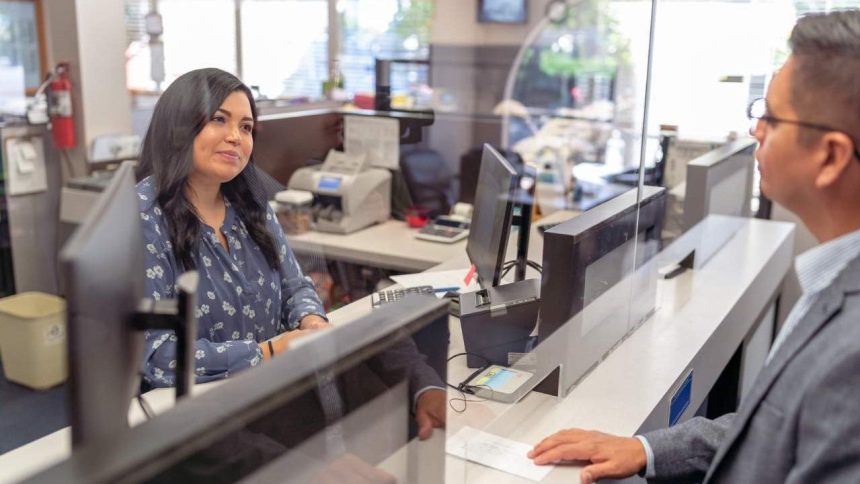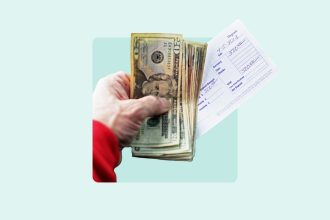If Tammy Wynette had written a country song about savings, it would probably have been titled, “Stand By Your Bank.” Most Americans are stubbornly, resolutely loyal to their banks — and in many cases it costs them money, time and a better experience.
Only 9 percent of consumers changed banks in the 12-month period ended January 2025, according to the latest J.D. Power Retail Banking Satisfaction Study, which surveyed more than 109,000 bank customers.
But the fact that few customers are changing banks isn’t exactly reflective of how many customers want to change banks. The J.D. Power survey also found that 13 percent of bank customers said they were likely to change their primary banks in the next 12 months. (Throughout the history of the J.D. Power study, the number of people who say they’re going to change banks has been about twice the number of people who actually do it.)
Further, the number of customers who are switching has more than doubled since 2019, when just 4 percent of customers changed banks. And younger survey respondents reported higher levels of willingness to switch. Twenty percent of Gen Z and 21 percent of Millennials said they’ll “definitely or probably” switch their primary financial institution in the next six months, according to the latest outlook survey from the Bank Administration Institute, a nonprofit research organization focused on education for the financial services industry.
But a full two-thirds of respondents in the J.D. Power survey say they’re unlikely to make a move. Even when another bank offers better rates or lower fees, only about one in four are willing to switch.
The hassle of switching banks
So, why are Americans unwilling to switch? The biggest reasons, according to J.D. Power, are hassle, uncertainty about the benefits and worries about fees or missing payments during a banking transition. That means that millions of us are missing out on higher yields, better digital tools and lower costs—leaving real money and benefits on the table.
It’s understandable. Breaking up with your bank can feel daunting. There’s paperwork, direct deposits, automatic payments—and, let’s be honest, a little bit of emotional inertia. But just like ending any relationship that’s stopped serving you, it’s about taking control and moving on to something better.
Bankrate’s take
Earlier this year, Bankrate released its latest checking account fee survey and found that Americans with a checking account have held onto their account for an average of 19 years, while those with a savings account have had it for 17 years. But the survey, in collaboration with YouGov, revealed much more than bank longevity. Learn more about Bankrate’s findings in its 2025 Checking Account Fee Survey.
So, here’s a step-by-step guide to making the switch—painlessly, confidently and with your finances intact.
Step 1: Know why you’re leaving
Before you start the process, get clear on why you want to switch. Is it high monthly fees? Low interest rates? Frustrating customer service or outdated technology? Pinpointing your reasons will help you choose a new bank that actually solves your problems—rather than just picking the first bank that offers a shiny sign-up bonus.
Pro tip
Make a list of your must-haves, whether it’s no minimum balance, a robust mobile app, ATM fee reimbursement or stellar customer support.
Step 2: Shop around for your next bank
Don’t just jump to the next big brandwagon. Stop and take the time to compare options:
- Online-only banks often offer higher interest rates and lower fees than traditional and brick-and-mortar banks.
- Credit unions can mean lower costs and a more personal touch.
- Community banks may provide better service and local investment.
Find a bank that has all the features you want and has hours and policies that fit your schedule and personal finances.
Step 3: Open your new account (but don’t move all your money yet)
Once you’ve picked your new bank, go ahead and open your new account. Most online banks let you do this in minutes. Be ready with your government-issued ID, Social Security number and an initial deposit (some banks have a minimum deposit requirement, so be sure to know this amount before you sign up for an account).
You don’t have to close your current account to open a new one. You can have multiple accounts with multiple different banks.
But wait, there’s more!
Don’t close your old account just yet. You’ll need both accounts open for a few weeks to ensure a smooth transition. This is key to avoiding some of the headache and heartache that can come with making the switch.
Step 4: Make a list of all linked payments and deposits
This is the step where most people get tripped up. Your checking account is probably the hub for direct deposits, bill payments, subscriptions and transfers. Missing one can mean a late fee or a bounced payment.
- Download your last two or three months of statements.
- Make a list of every recurring deposit (like your paycheck) and every recurring withdrawal (like rent, utilities, streaming services, gym memberships, etc.).
Bankrate budgeting
Understanding how much money you’re making, and where you’re spending it, comprise the foundation of a strong financial plan. Visit Bankrate’s Budgeting Basics page for all you need to know about budgeting, from getting started and envelope budgeting, to understanding the 50/30/20 rule and how to make a zero-based budget.
Step 5: Start moving your money
Transfer a small amount of money into your new account to make sure everything works. Then, update your direct deposit information with your employer or benefits provider. You may need to be patient, as this can take a pay cycle or two to process.
Then start switching your automatic payments and linked accounts. Many companies let you do this online, but some may require a phone call or a form.
Step 6: Monitor both accounts
For the next month, keep an eye on both your old and new accounts. Watch for any stray transactions or missed payments. If you spot any, update the information right away.
Pro tip
Leave a small buffer in your old account to cover any lingering charges.
Step 7: Close your old account (the right way)
Once you’re sure all deposits and payments have been switched and your old account balance is zero, it’s time to make the breakup official. Contact your old bank—ideally in writing—and request to close your account. Get written confirmation that the account is closed and ask for a final statement.
Don’t forget
Destroy old checks and debit cards linked to the closed account.
Bottom line
Switching banks isn’t as hard, or as scary, as it seems. With a clear plan and a little patience, you can break up with your old bank and find a financial partner that actually deserves your loyalty. The hardest part is getting started. But once you do, you’ll wonder why you waited so long in the first place.
Why we ask for feedback
Your feedback helps us improve our content and services. It takes less than a minute to
complete.
Your responses are anonymous and will only be used for improving our website.
Help us improve our content
Read the full article here
















